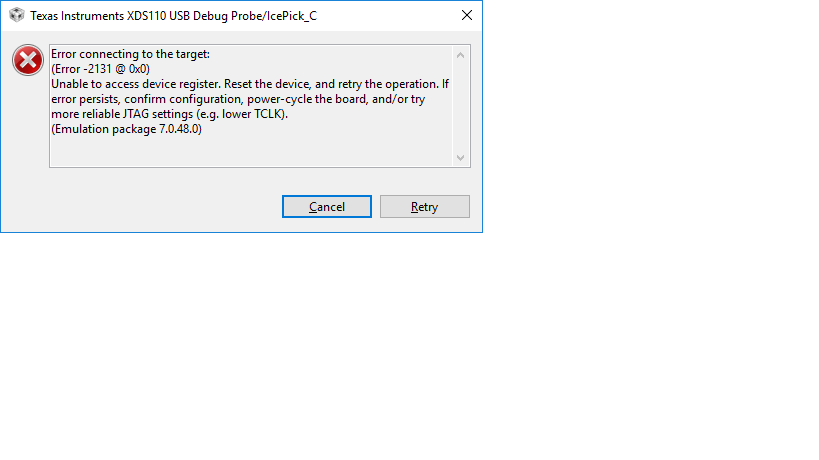Other Parts Discussed in Thread: CC3220SF, UNIFLASH
Tool/software: Code Composer Studio
 Out of the blue, after making routine code changes, I started getting the dreaded "Error -2131" popup as per the attached screenshot.
Out of the blue, after making routine code changes, I started getting the dreaded "Error -2131" popup as per the attached screenshot.
Cycling power (by unplugging the USB cable to the LP board) and even the whole PC does not clear the problem.
I also tried a second second LP board with its own USB cable and a different USB port on the PC.
My code uses the "__SF_DEBUG__" technique, but I've been using that for months. It does, however, appear (based on LED activity) that the latest code changes have made it to the internal flash (unplugging/reconnecting the USB cable shows it running).
I went back to TI's gpiointerrupt_CC3220SF_LAUNCHXL_nortos_ccs project and now get "Error -2131" there.
Is there something my code could have somehow done on the board to make it "deaf" to CCS' efforts to connect to it? If so, how do I "clear" things? I also fired up UniFlash only to find that it does not appear to be able to identify the board!

